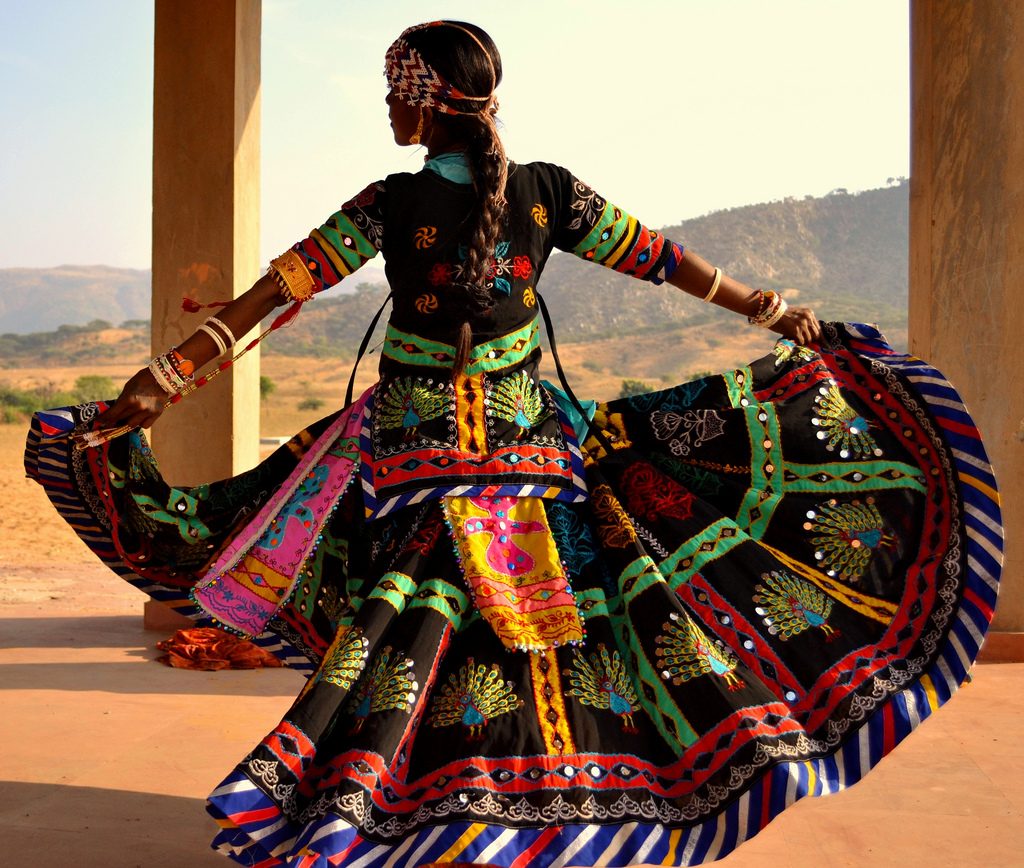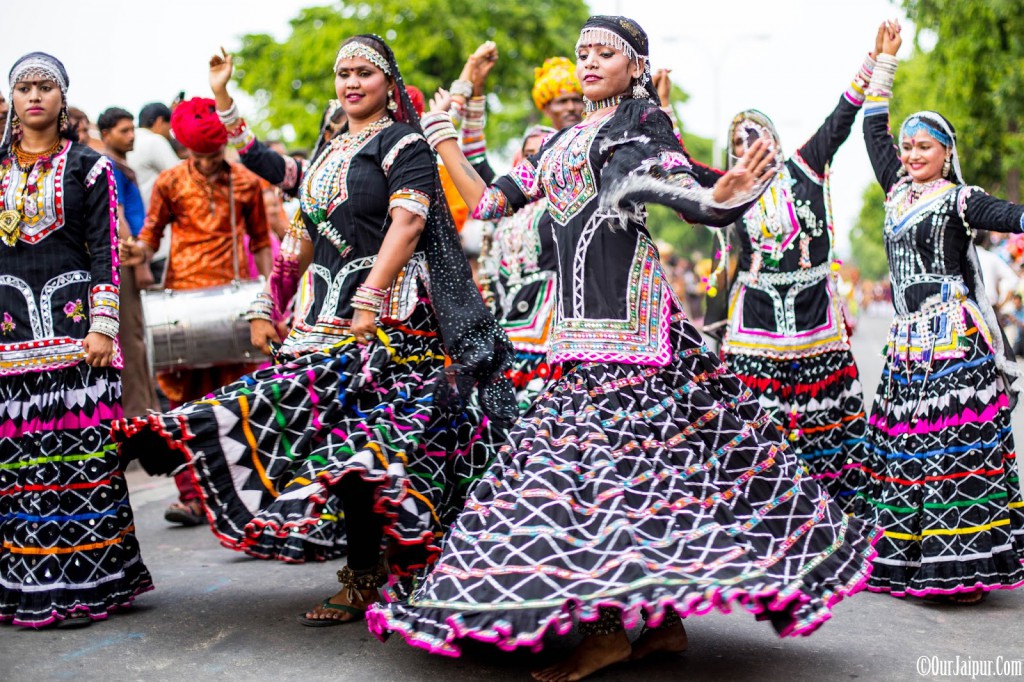
Kalbelia
The Kalbelia or Kalbeliya or Karberia, as it is sometimes spelled is a dance form that is associated with a Rajasthani tribe of the same name. The dance form consists of swirling, graceful movements that make this dance a treat to behold. The movements associated with the Kalbelia also make it one of the most sensuous forms of folk dance in India. The Kalbelia dance is generally performed for any joyous celebration and is considered to be an integral part of the Kalbelia culture. Another unique aspect of the Kalbelia dance is that it is only performed by women while the men play the instruments and provide the music.

Kalbelia (Image: ourjaipur.com)
History
As previously mentioned, the Kalbelia dance is closely associated with the Kalbelia tribe of Rajasthan. The Kalbelia tribe follow Hindusim and are a nomadic tribe and are considered to be a fringe group in society. They prefer to live in paces just outside of villages and cities in makeshift camps called Deras. One of the most well known aspects of the Kalbelia tribe is their expertise as snake charmers and snake catchers. This connection to snakes can be seen in the Kalbelia dance as the costume, as well as the dance movements, resemble the movements made by serpents.
Performance
The Kalbelia is almost exclusively performed on stage by females while the men play the instruments. There are a number of traditional Indian instruments used during the performance of the Kalbelia such as the pakhwaja, the dholak, jhanjhar, sarangi as well as the harmonium. However, the most characteristic instrument played during a performance of the Kalbelia has to be the Pungi. The pungi, or been, is a wooden wind instrument that is played with no pauses. The been is synonymous with snake charming in India and ties in perfectly with the heritage of the Kalbelia tribe.
During the performance, the women sway, twirl and gyrate to the music and use acrobatic dance steps which showcase the dancers’ flexibility and litheness. As the performance goes on, the tempo of the Kalbelia dance increases and so does the pace of the dance steps. Due to the demanding nature of the dance, the performance is usually carried out in pairs with at least two pairs who swap stage-presence seamlessly. This lets the one half of the group catch their breath while at the same time not letting the pace of the dance slow down.
The Dance Costume
The Kalbelia dancers wear traditional dresses of their tribe when they are performing. The performers wear an Angrakhi on their upper body whose sleeves can either be half length or full length while their head is covered by an Odhani. They also wear a long skirt on their lower body which is called a Lehenga or a Ghagra which has a wide circumference. The whole dress is essentially black in colour with red decorative laces. It also employs silver thread that is sewed in an assortment of patterns on the black dress. This makes the dress resemble a black snake that has white spots or stripes more closely. It also features a lot of colourful patters and designs along with mirror work that help the dancer attract the attention of the audience.
Kalbelia dancers prefer to wear traditional jewelry during their performances. They wear beads and jewellery around their neck and their head in the form of elaborate necklaces and Maang-tikka. They also wear bangles and armlets. These can either be worn till the elbow or all the way up the arm. If the sleeve of the Angrakhi is full length, bangles need not be worn by the Kalbelia performers.

Kalbelia (Image: Flickr)
Present Day Scenario
The Kalbelia tribe has been forced to stop their traditional profession of snake handling ever since the enactment of the Wildlife Act of 1972. As a result, performance art has become a major source of income for the once nomadic tribe. The beauty and skill of the Kalbelia dancers have received recognition not just in India, but from the world over. However, the Kalbelia dance is under threat as performance opportunities are quite sporadic and most of the people from the tribe have moved on to working in the fields or grazing cattle as a way to earn income. There is also no organized training system, schools, manuscripts or text that help teach Kalbelia song and dance.
Over the last decade or so, governmental agencies have been making a concerted effort towards preserving this dance form by offering performance opportunities to them infairs and festivals of national repute. These fairs attract visitors from across the globe, giving Kalbelia performers better exposure.
Interesting Facts
- The dresses worn by the dancers are made by the Kalbelia women themselves.
- The Kalbelia dance is not taught to children. Rather, they are expected to learn it from watching the elders perform it at home.
- Kalbelia dance and songs are a part of UNESCO’s representative list of Intangible Cultural Heritage of Humanity.
- The Kalbelia believe that playing the Been will not make the snake bite them. They also believe that consuming a Surma made from the snake’s venom will ensure that they do not lose their eyesight.
- Masters of Kalbelia are able to generate lyrics spontaneously and can improvise dance routines mid-performance.
Video of Kalbelia
Reference
Categories: Cultural Connections, Indian Performing Arts
